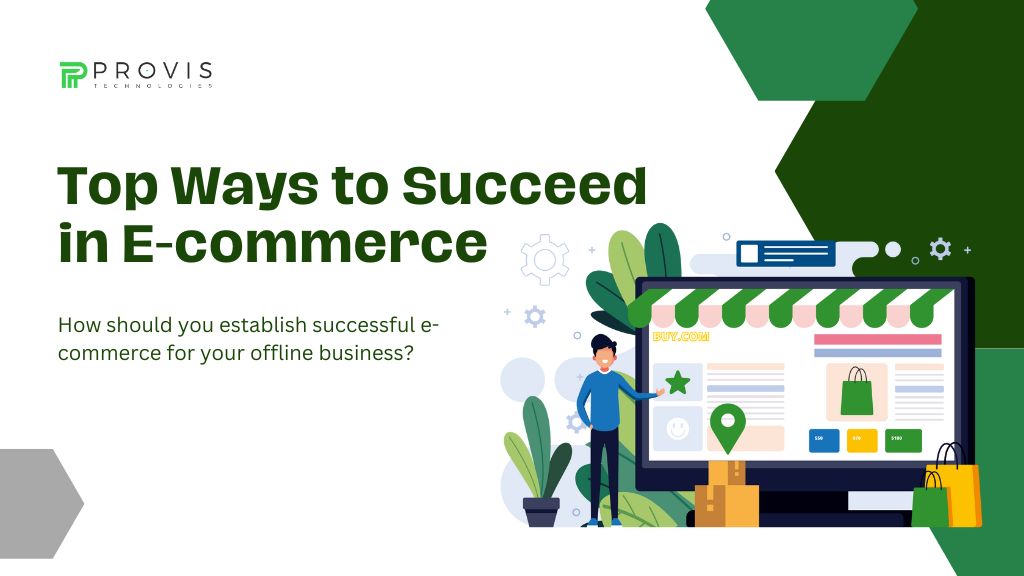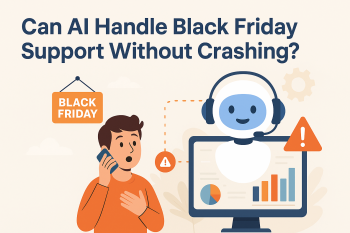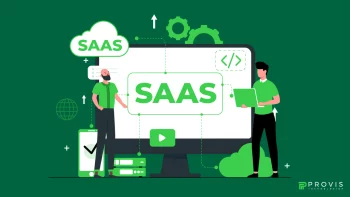In today’s rapidly changing business environments, integrating e-commerce with offline operations has become crucial for sustained growth. This article will delve into the significance of e-commerce for offline businesses, illuminate its endless benefits, and provide an overview of the comprehensive guide to the best ways to succeed online.
Why E-commerce Matters for Offline Businesses?
E-commerce offers offline businesses a gateway to reach a wider audience beyond their physical locations. With the increasing preference for online shopping, establishing an e-commerce presence ensures sellers stay competitive and accessible to modern consumers.
Benefits of Integrating E-commerce with Offline Operations
Integrating e-commerce with offline operations presents many advantages. It enables businesses to enhance customer convenience, expand market reach, increase sales opportunities, and gather valuable insights through data analytics. Moreover, a well-executed e-commerce strategy fosters brand visibility, builds customer loyalty, and provides a platform for innovation.
Ways to establish a successful e-commerce business
Below are the complete insights and actionable strategies for offline sellers looking to venture into e-commerce. From market research & platform selection to marketing tactics & performance optimization, each offers valuable guidance to ensure a successful transition to online selling.
Understanding Your Market & Audience
Before embarking on an e-commerce journey, offline businesses must conduct thorough market research and gain insights into their target audience.
Market Research Strategies for Offline Businesses
Market research involves analyzing industry trends, identifying consumer preferences, assessing competitors, and evaluating market dynamics. By understanding the market landscape, businesses can tailor their e-commerce strategy based on customers.
Identifying Target Audience Characteristics
Understanding the demographics & psychographics of the target audience is essential for effective targeting and personalized marketing efforts. Creating detailed customer personas helps businesses customize their product offerings, messaging, and promotional activities to resonate with their audience.
Don’t Miss:- 10 Essential Tips for Launching Your E-commerce Journey with WooCommerce
Analyzing Competitors’ Online Presence
Analyzing competitors’ e-commerce strategies provides valuable insights into industry benchmarks, emerging trends, and areas of opportunity. By benchmarking against competitors, businesses can identify gaps in the market, differentiate their offerings, and formulate a competitive advantage.
Setting Up Your E-commerce Platform
Selecting the right e-commerce platform is crucial for online success. This section explores primary considerations for choosing and customizing an e-commerce platform that aligns with the unique needs and objectives of the business.
Choosing the Right E-commerce Platform
When selecting an e-commerce platform, businesses should consider scalability, flexibility, ease of use, integrations, and cost. Whether opting for a hosted solution like Shopify or a self-hosted platform like Magento – it’s mandatory to pick a platform that offers the features and functionalities required to support your business growth.
Customization & Branding Considerations
Customizing the e-commerce platform to reflect the brand identity & values is crucial for establishing a long-term online presence. From website design & layout to product listings & checkout process – businesses should ensure consistency in branding elements to encourage brand recognition and trust building.
Integrating E-commerce with Existing Systems
Integrating e-commerce with existing systems such as point-of-sale (POS), inventory management, and customer relationship management (CRM) facilitates smooth operations and data synchronization. By leveraging integrations, businesses can streamline processes, improve efficiency, and deliver a unified shopping experience across online and offline channels.
Crafting Compelling Product Listings
Effective product listings are instrumental in capturing the attention of online shoppers and driving conversions. These are the best practices for optimizing product descriptions, photography, and search engine visibility.
Must Know:- Benefits of Shopify: How to Scale E-commerce Business with Shopify
Optimizing Product Descriptions for Online Sales
Product descriptions should be concise, informative, and persuasive, highlighting key features, benefits, and unique selling points. By incorporating relevant keywords and addressing customer pain points, businesses can improve search visibility and compel users to make informed purchasing decisions.
High-Quality Product Photography & Visuals
High-quality product photography is essential for showcasing products in the best possible light and conveying their quality & value to customers. Investing in professional photography and utilizing multiple images, videos, and 360-degree views can enhance the product’s visual experience and credibility.
Implementing SEO Strategies for E-commerce
SEO is crucial in getting organic traffic to websites. By optimizing product titles, descriptions, meta tags, and URL structures – businesses can improve their search engine rankings and attract relevant visitors actively searching for their offerings.
Building a Smooth User Experience
A seamless user experience is foremost for retaining customers and maximizing conversion rates in the competitive e-commerce space. Let’s explore strategies for designing intuitive website navigation, implementing responsive web design, and streamlining checkout processes.
Designing an Intuitive Website Navigation
An intuitive website navigation ensures that users can easily find what they’re looking for and navigate the site effortlessly. By organizing products into logical categories, providing clear navigation menus, and incorporating search functionality – businesses can enhance the user experience and reduce bounce rates.
Implementing Responsive Web Design
With the increase of mobile devices, e-commerce websites must be mobile-friendly and responsive across all screen sizes & devices. By adopting responsive web design principles, businesses can provide a consistent and optimized shopping experience regardless of the device.
Streamlining Checkout & Payment Processes
The checkout process is a critical touchpoint in the customer journey, and any friction or complexity can lead to abandoned carts and lost sales. Simplifying the checkout process, minimizing form fields, offering guest checkout options, and providing multiple payment methods – help businesses improve conversion rates.
Leveraging Online Marketing Channels
Effective marketing is needed for driving traffic, generating leads, and maximizing sales.
Developing an E-commerce Marketing Strategy
An e-commerce marketing strategy should encompass channels & tactics, including search engine marketing (SEM), social media marketing, content marketing, email marketing, and influencer partnerships. By aligning marketing efforts with business goals and target audience preferences, businesses can maximize their marketing ROI and drive sustainable growth.
Utilizing Social Media for E-commerce Growth
Social media platforms offer valuable opportunities for customer engagement, building brand awareness, and driving traffic to e-commerce websites. By creating compelling content, using social commerce features, and engaging with followers – businesses can harness the power of social media to drive sales.
Email Marketing Tactics for Offline Businesses
Email marketing remains one of the most effective channels for nurturing leads, promoting products, and driving repeat purchases. By segmenting email lists, personalizing messaging, and automating email workflows – sellers can deliver targeted & relevant content to subscribers for higher engagement.
Providing Exceptional Customer Service
Customer service is everything. The below points will tell you more.
Offering Multiple Customer Support Channels
Providing multiple customer support channels, such as live chat, email, phone support, and social media messaging, ensures that customers can reach out for assistance in their preferred channel. By offering responsive support, businesses can address customer inquiries, which leads to higher satisfaction levels & repeat business.
Personalizing the Online Shopping Experience
Personalization is a must for delivering tailored shopping experiences that resonate with individual customers. By leveraging data analytics, purchase history, and browsing behavior – businesses can recommend relevant content & services that drive conversions.
Handling Returns & Exchanges Efficiently
A smooth returns & exchanges process is essential for building trust among online shoppers. By establishing clear return policies & offering hassle-free returns – businesses can alleviate customer concerns and ensure a positive post-purchase experience.
Read More:- The Power of Personalization: Enhancing User Experience in E-commerce
Analyzing & Optimizing Performance
Continuous performance analysis is essential for maximizing the effectiveness of e-commerce efforts.
Monitoring Key E-commerce Metrics
Tracking key e-commerce metrics such as website traffic, conversion rates, average order value, and customer lifetime value provides valuable insights into the health & performance of an e-commerce business. By regularly analyzing these metrics, sellers can identify areas for improvement, measure the impact of marketing campaigns, and make data-driven decisions.
Conducting A/B Testing for Continuous Improvement
A/B testing involves comparing two versions of a web page, email, or marketing campaign to determine which performs better in conversions or other predefined goals. Testing elements such as headlines, calls-to-action, and product layouts can help identify optimization opportunities to maximize results.
Implementing Customer Feedback Loops
Gathering and acting upon customer feedback is essential for understanding customer needs. From surveys & reviews, businesses can gain valuable insights into customer preferences and sentiments, enabling them to make informed decisions.
Overcoming Common Challenges
Transitioning to e-commerce poses various challenges for offline businesses – from managing inventory and fulfillment to balancing online & offline operations. It’s essential to learn about it.
Managing Inventory & Fulfillment
Effective inventory management is critical for meeting customer expectations in e-commerce. Implementing inventory tracking systems, optimizing warehouse processes, and partnering with reliable logistics providers help sellers streamline inventory management and ensure timely order fulfillment.
Balancing Online & Offline Operations
Balancing online & offline operations requires careful coordination and resource allocation to ensure smooth integration. By leveraging technology solutions such as omnichannel retail platforms and centralized inventory management systems – businesses can synchronize operations that bridge the gap between online & offline channels.
Dealing with Security & Privacy Concerns
Security is everything in e-commerce. Implement SSL encryption, PCI compliance, and secure payment gateways to safeguard customer data and build confidence among online shoppers.
E-commerce Statistics
- According to Statista, 80% of consumers prefer to shop online due to convenience & accessibility.
- According to McKinsey & Company, businesses that provide personalized shopping experiences witness a 10-15% increase in revenue.
- According to Baymard Institute, 70% of online shoppers abandon their carts due to a complicated checkout process.
Bottom Line
Establishing a successful e-commerce presence for an offline business requires careful planning. By understanding the above points, you can effectively leverage the power of e-commerce. As technology continues to evolve, you need to remain adaptable to meet the expectations of modern consumers. If you understand these ways to succeed in e-commerce, great; if not, you can get help and free consultation from one of the best e-commerce developers, Provis Technologies – connect with them.
FAQs
How can I set up an online store for my offline business?
To set up an online store, choose the right e-commerce platform, customize it to reflect your brand, and integrate it with your existing systems.
How do I get more customers to my e-store?
You can attract customers to your online store by optimizing product listings for search engines, leveraging social media for promotion, and offering discounts or promotions to incentivize purchases.
How can I ensure a smooth shopping experience for my customers?
To ensure a seamless shopping experience, focus on intuitive website navigation, responsive design for mobile users, and a streamlined checkout process with multiple payment options.
How do I track my online store performance?
You can track the performance of your online store by monitoring key metrics, such as website traffic, conversion rates, and average order value, using analytics tools provided by your e-commerce platform.
What should I do if I encounter challenges with inventory management?
Consider implementing inventory tracking systems, optimizing warehouse processes, and partnering with reliable logistics providers to streamline operations.
How can I expand my online business to international markets?
To expand your online business to international markets, conduct thorough market research, understand regulatory requirements, and explore cross-border e-commerce opportunities, considering factors such as language, culture, and shipping logistics.
How to get e-commerce?
Connect with e-commerce development agencies like Provis Technologies. They do it all – you only share your plan.
Written By
Author's Picks
- 40+ Unique Website Name Ideas for 2025
- 21/11/2024
- Step-by-Step Guide to B2B Web Application Development in 2025
- 26/02/2025
- How Outdated Ecommerce Technology Is Killing Online Stores in 2025
- 30/04/2025
Categories
- AI for Startups
- AI in Web Development
- AI Integration
- AI Platforms
- AI Prompt
- AI Tools
- AI Trading Software
- Android App
- Android vs iOS Development
- Angular
- API
- API Development
- App
- app development
- App Idea
- App User Feedback
- Application
- Artificial Intelligence
- Audit Services
- Automotive Industry
- Awards and Recognition
- Business Consulting
- Business Website
- Chatbots
- CRM
- CRM for Financial Advisors
- Custom CRM
- Custom SaaS
- Custom Website
- Customer Service
- dashboard design
- Developing a Mobile App
- Digital Business
- E-commerce
- EMR Integration
- Finance
- Financial Advisors
- Financial Advisors
- GIT
- Health Insurance
- iOS App
- iOS App Development
- IoT Mobile App Development
- IoT Platforms
- IT Audit Services
- IT Consulting
- IT Strategies
- Java Development
- Laravel
- Lean Canvas
- Learning Management System
- Logistics Apps
- Mobile App Development
- MVP
- Native App
- News Aggregator Site
- OTT
- Outsourcing IT
- Payment Gateway
- predictive analysis
- Product Launch Strategy
- Progressive Web App (PWA)
- Prototype
- Recommender Systems
- Ruby
- SaaS
- SaaS Application
- SaaS Business
- SaaS Company
- SaaS Development
- SaaS Product
- SaaS Project
- Sales Funnel
- SEO
- Shopping Cart
- Software Development
- SSL and TLS
- Startup Checklist
- Technology
- Tetradic Color Scheme
- UI/UX Design Company
- Unit Testing
- User Flow
- User Testing
- Web Development
- Web Performance Optimization
- website Maintenance Services
- Website Migration Service
- Website Speed Optimization
- WooCommerce
- WordPress





